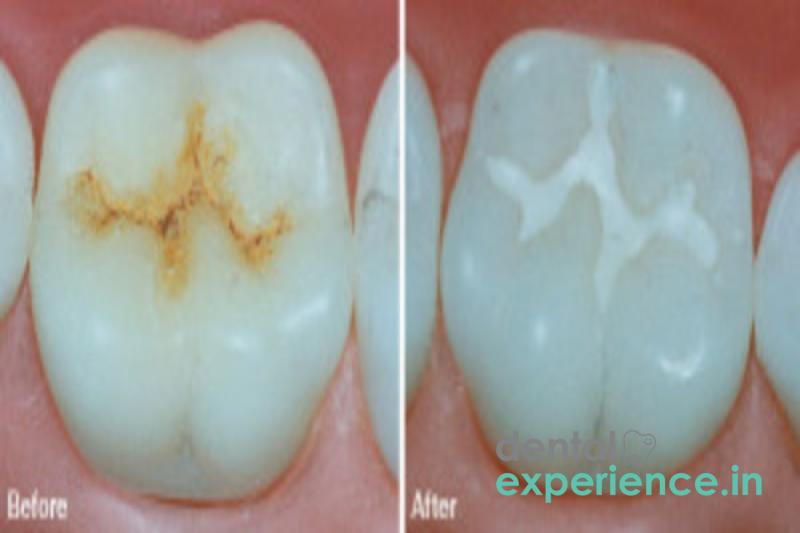You may have had a dental crown fitted in the past but what you may not know is whatever material they are made fr ..
Pit and Fissure Sealants
Introduction | Purpose | Ideal Patients | Types | Treatment Steps | Benefits | Advantages | Durability | Treatment Time | Cost | Risk & Complications | Disadvantages | Alternatives | Aftercare |
Fast facts

800-1000/ tooth
Treatment Longevity :
Short Term
Treatment Duration : 10 minutes
Brushing your teeth is important, but dental sealants may be the best way to prevent kids from getting cavities.
You might have noticed a few of your teeth have brown/black lines at the center of their biting surfaces that dont go away even after a dental cleaning, This could be the start of a cavity, as this is the area where food tends to stick regularly due to the deep grooves present on the tooth surface. This area is also the most difficult to access while cleaning the tooth or brushing, in such situations we make use of pit and fissure sealants, to prevent further damage to the tooth.
It is a relatively simple and inexpensive procedure in children.
Dental sealants are a thin coating that is painted on teeth to protect them from cavities. They can last upto 9 years.
If the application technique is perfect, dental sealants can last a lifetime. More often than not, though, they do need to be replaced.
As soon as your child is getting new teeth in with grooves called ‘pits and fissures’ like molars and premolars, get them sealed once they are erupted. This happens at 6, 12, and 18 years of age.
Baby or primary teeth can be sealed, but the child should be old enough to tolerate the painless procedure, which involves being able to hold their mouth open and not move for a few minutes. Usually, treating younger teeth is performed only on those with an increased risk of tooth decay.
Adults can also benefit from sealants. With age, our exposure to decay increases, and the protective quality and biochemistry of saliva changes with certain medications over time. That said, adults are also candidates for this treatment.
But if you already have a restoration or implant, then that tooth will not benefit from a sealant.
